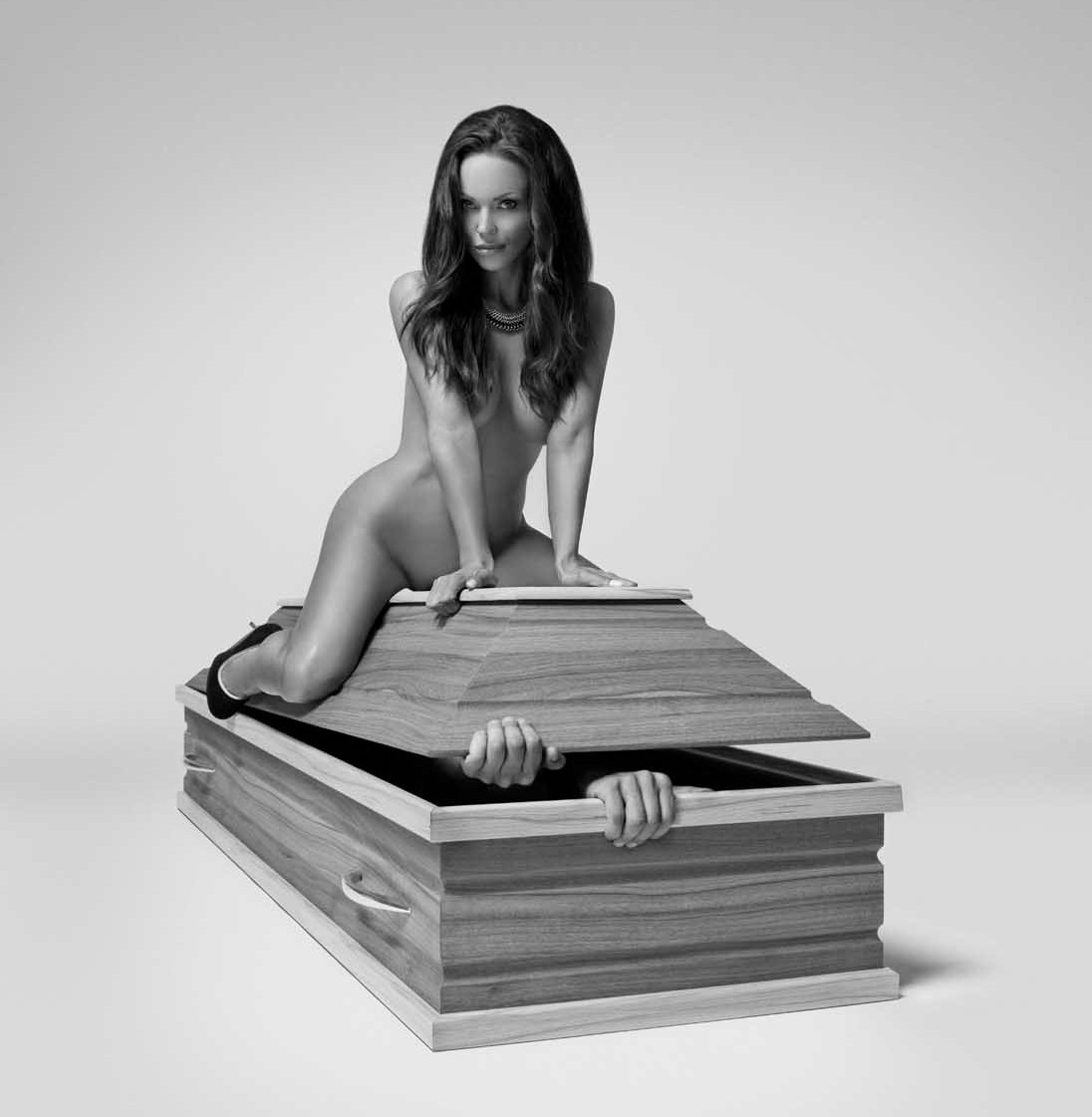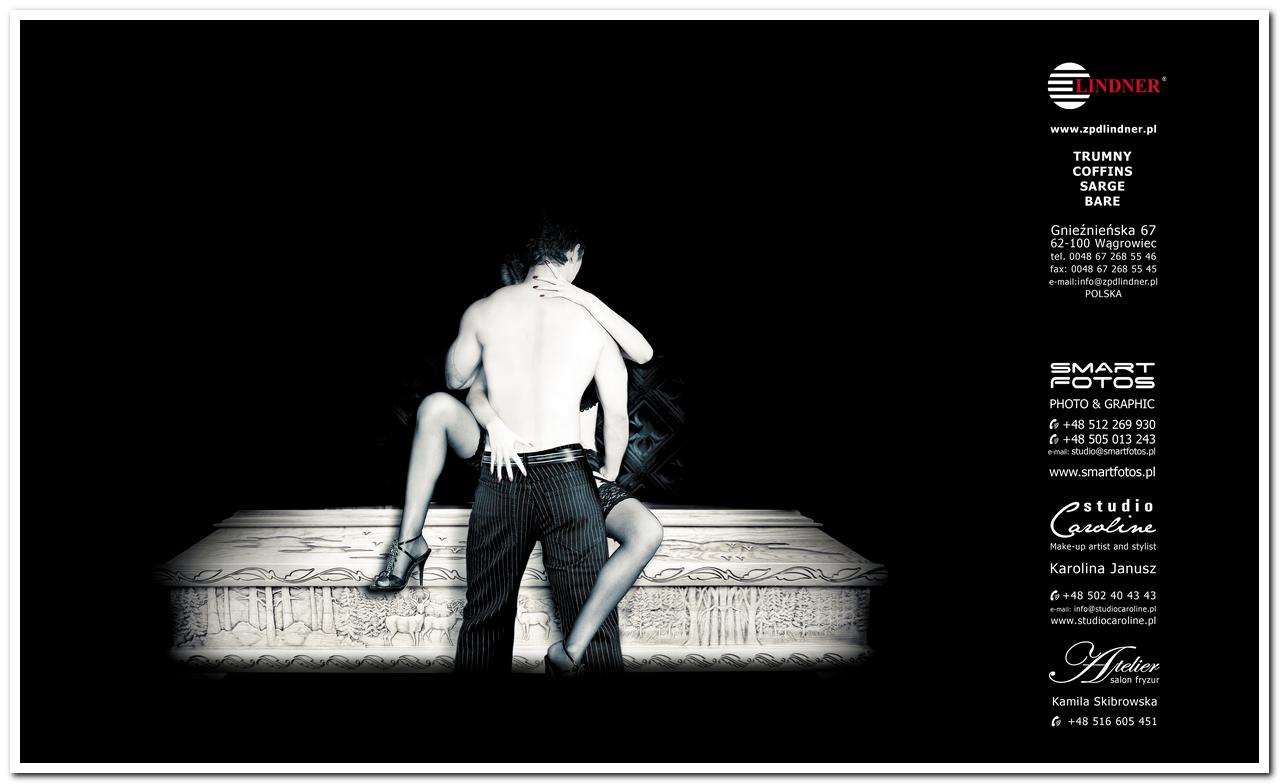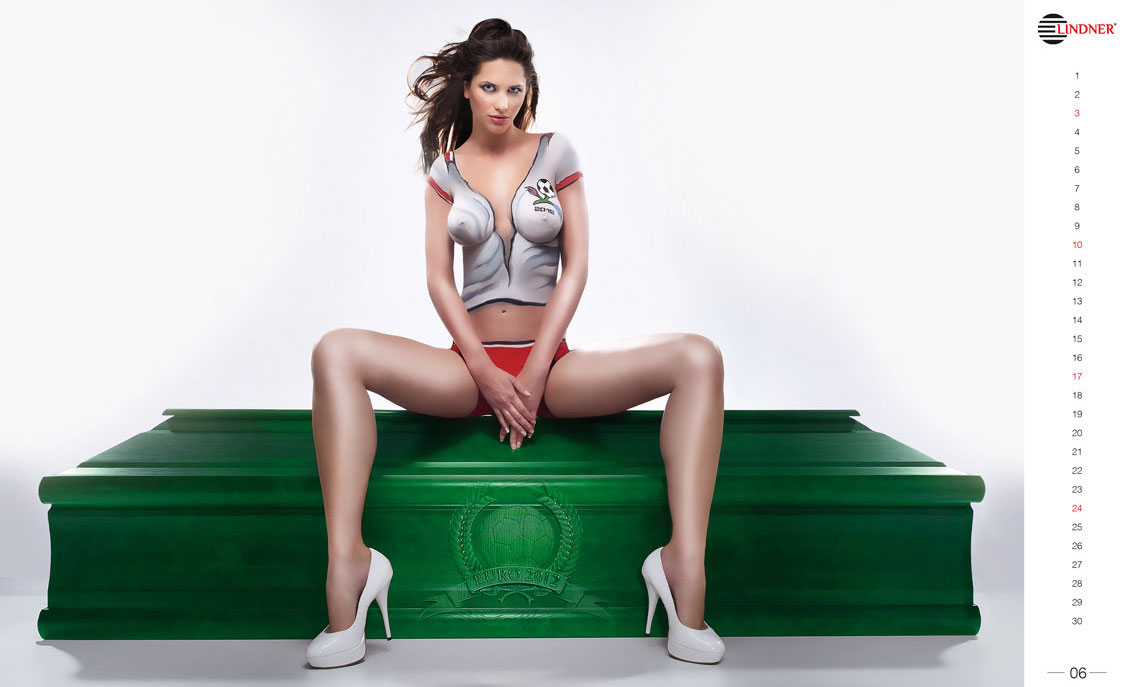See Lindner’s Racy Coffin Calendars that Use Sex to Sell Death
“ For a decade, it has become our hallmark to combine opposites: beautiful, naked body of man with the perfect matter of exclusive coffins. Eros with Tanatos.” ~ Introduction to Lindner Calendar Edition 2019
In 2010, when Polish coffin maker Lindner published its first calendar featuring scantily-clad female models posing alongside, on top of, and inside the company’s newest product line, some in the press wrote off the promotion as an effort to compete with a similar calendar series being released by an Italian coffin manufacturer. Ten years later, Lindner has solidified its stance that sex can indeed sell coffins by publishing its raciest edition yet.

Sex and death
Owner Zbigniew Lindner doesn’t apologize for pairing “the beauty of Polish girls and the beauty of our coffins.” Lindner once told the Daily Mail, “So much work goes into our coffins that are only seen for a few moments at the funeral. We wanted to show that a coffin shouldn’t be a sacred object. It isn’t a religious symbol.”
The Catholic church disagrees. In a 2014 statement, a spokesperson labelled the campaign “inappropriate,” saying, “human death should be treated with solemnity and not mixed up with sex.”
But why not? Lindner’s success in sales of both coffins and its annual calendars indicates that the juxtaposition of sex and death is appealing on some level, even in Poland, which is 96 percent Catholic.
In fact, “Death and the Maiden” (D & M) is a genre that shows up in European artwork as early as the 1500s, according to a paper published in the Journal of Gender Studies. Author Christina Welch writes:
“Drawing on Biblical narrative, Augustinian theology, and European socio-cultural perceptions of gender, […] D&M images are highly eroticised and place woman as signifiers of transcient life (vanitas) and earthly pleasure (voluptas), juxtaposing her with a masculine/male representation of death; Death being imaged as an individual in the sixteenth century, and as a coffin in the contemporary works.
An “old trope”
In another paper called “Coffin Calendar Girls: A New Take on an Old Trope,” Welch thoroughly explores Lindner’s 2010 through 2013 calendars as well as the 2003 through 2013 calendars issued by the Italian coffinmaker Confani Funebri. Over the years, according to Welch, the Funebri calendars’ portrayal of the “maiden” becomes “increasingly erotic and as such echoes the proto-early-Reformation images,” with the coffins the “contemporary symbol of mortality.” The Lindner calendars, says Welch, go a step further by reversing the roles and portraying the maiden not as succumbing to Death, but having power over it.
The original intent of either Lindner or Confani Funebri most likely wasn’t to revive the Death & the Maiden genre, or even to invite academic scrutiny. It was to make people aware of the brands and sell more coffins. Lindner describes its calendar as an “exclusive product released in a limited edition…A true gem for collectors and lovers of beauty: twelve unique coffins and beautiful models.”
Lindner continues to push the envelope with each new edition. Less and less clothing, the addition of naked male models, and progressively more provocative themes and poses ensures the continued popularity of its annual calendars–as well as more controversy.










